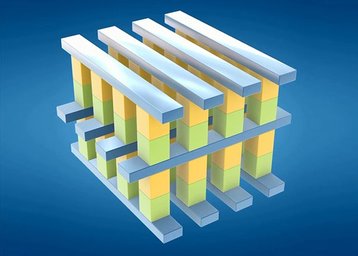The first applications for the recently announced 3D Xpoint memory will be in PCIe storage, said Intel’s CEO Brian Krzanich during the opening keynote of the Intel Developer Forum in San Francisco.
The company will begin releasing transistor-free SSDs under the new Optane brand as early as next year.
The conference also included a demo in which an Optane SSD was seen outputting around seven times more IOPS than Intel’s high-end P3700 PCIe drive, launched last year.
3D Xpoint-based SSDs will be followed by storage devices for servers that fit into the high-bandwidth DIMM slots.
Surprise!
3D Xpoint (pronounced ‘crosspoint’) is a new type of non-volatile memory developed by Intel and Micron. It combines the speeds and endurance of DRAM with capacity and persistence of flash-based storage.
Its creators claim 3D Xpoint is fundamentally different from such non-volatile storage alternatives as ReRAM and Phase Change Memory, without revealing how it actually works.
According to Intel’s July announcement, 3D XPoint memory does not feature transistors and does not trap electrons to store data. Instead, it relies on layers of switch and memory cell materials that can permanently change their state.
These layers can be stacked on top of each other to produce storage devices that are 10 times denser than conventional SSDs or DRAM, and yet allow every memory cell to be accessed individually.
The memory will be used as a basis for Optane drives – a name for products that combine 3D XPoint with Intel’s memory controller, interface hardware and software. These high performance SSDs will be available to both consumers and enterprise customers next year.

